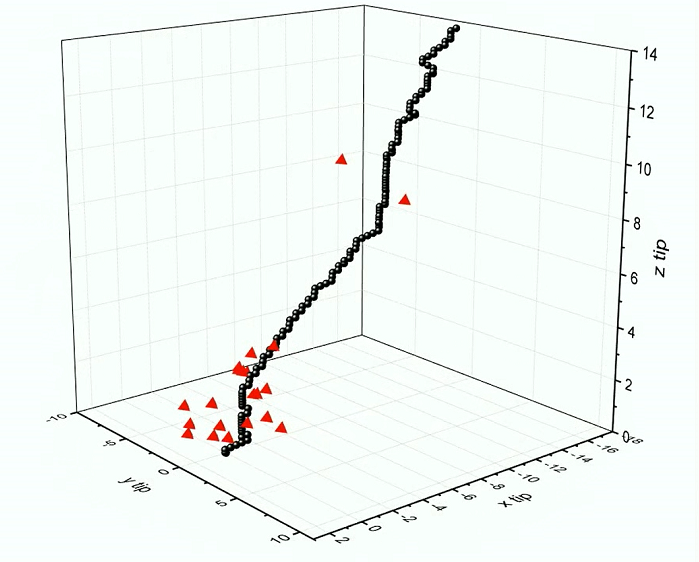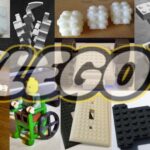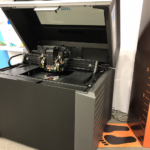

If you know even just a little bit about science, you probably already know that molecules are often referred to as “the building blocks of life.” Made of a group of atoms that have bonded together, molecules make up all kinds of materials, but behave totally differently in regards to macroscopic objects than atoms do. Picture how a LEGO model is made of many teeny tiny bricks—it’s easy for us to move these bricks around, but if you think of molecules as these bricks, it’s much more difficult to do so, as each one basically requires its own separate set of instructions.
A team of researchers from Germany and Korea are working to turn this around, and have created an artificial intelligence (AI) system that can learn how to selectively grip, and move, separate molecules through the autonomous use of a scanning tunneling microscope (STM) which is used for imaging surfaces at the atomic level. So, if we go back to the LEGO metaphor, the team made an autonomous robot that can play with LEGO bricks on the nanoscale, which could have major ramifications for molecular 3D printing.
Dr. Christian Wagner, head of the ERC working group on molecular manipulation at Forschungszentrum Jülich, explained, “If this concept could be transferred to the nanoscale to allow individual molecules to be specifically put together or separated again just like LEGO bricks, the possibilities would be almost endless, given that there are around 1060 conceivable types of molecule.”
Researchers from Forschungszentrum Jülich, Jülich Aachen Research Alliance (JARA), RWTH Aachen University, Technische Universität Berlin, the Max Planck Institute for Informatics, and Korea University make up the team. They recently published a paper, “Autonomous robotic nanofabrication with reinforcement learning,” describing their method in Science Advances.
The abstract states, “The ability to handle single molecules as effectively as macroscopic building blocks would enable the construction of complex supramolecular structures inaccessible to self-assembly. The fundamental challenges obstructing this goal are the uncontrolled variability and poor observability of atomic-scale conformations. Here, we present a strategy to work around both obstacles and demonstrate autonomous robotic nanofabrication by manipulating single molecules. Our approach uses reinforcement learning (RL), which finds solution strategies even in the face of large uncertainty and sparse feedback.”
To guide the rigid cone at the end of the STM tip so that individual molecules can be arranged in a specified manner, instead of just moving back and forth, a special recipe is needed, and because nanoscale mechanics are so complicated, it’s not something a scientist can just easily figure out or calculate.
“To date, such targeted movement of molecules has only been possible by hand, through trial and error,” explained Prof. Dr. Stefan Tautz, head of Jülich’s Quantum Nanoscience institute. “But with the help of a self-learning, autonomous software control system, we have now succeeded for the first time in finding a solution for this diversity and variability on the nanoscale, and in automating this process.”

So, what makes this possible? An area of machine learning, called reinforcement learning (RL), that concerns itself with the way software agents should take action in a specific environment to enhance the possibility of receiving a cumulative reward. In this case, the researchers used robotics and RL to automate a manipulation task—moving molecules—at the nanoscale. So, the algorithm the researchers use will keep working to solve its given task, and learn from its experience each time.
Prof. Dr. Klaus-Robert Müller, head of the Machine Learning department at TU Berlin, explained, “We do not prescribe a solution pathway for the software agent, but rather reward success and penalize failure.”
You might be familiar with the AI system AlphaGo Zero, a version of DeepMind’s AlphaGo software. In 2017, AlphaGo Zero was able to autonomously come up with strategies to win a complicated game, without having to watch humans play it; the system was able to beat professional players within a few days. But this team demonstrated its RL approach by autonomously removing molecules from a supramolecular (made of many molecules) structure with a scanning probe microscope.
“In our case, the agent was given the task of removing individual molecules from a layer in which they are held by a complex network of chemical bonds,” Dr. Wagner explained. “To be precise, these were perylene molecules, such as those used in dyes and organic light-emitting diodes.”
One difficulty the researchers ran into was that the force needed to move the molecules can’t surpass “the strength of the bond with which the tip of the STM attracts the molecule” because it would break. So, at the beginning, the software agent would move at random, and break the bond between the molecule and the microscope tip, but eventually created its own set of rules to ensure this would not continue.
Another issue that occurred due to the use of RL on the nanoscale is that the metal atoms which create the STM’s tip can shift a little, which changes the bond strength. But the researchers figured this out as well, by having the software learn “a simple model of the environment” where manipulation occurs parallel with the first cycles. Then, the agent is able to train in reality and within its own model at the same time, which can really speed up its learning process.
“Every new attempt makes the risk of a change and thus the breakage of the bond between tip and molecule greater. The software agent is therefore forced to learn particularly quickly, since its experiences can become obsolete at any time. It’s a little as if the road network, traffic laws, bodywork, and rules for operating the vehicle are constantly changing while driving autonomously,” stated Prof. Dr. Stefan Tautz.
“Up until now, this has only been a ‘proof of principle’. However, we are confident that our work will pave the way for the robot-assisted automated construction of functional supramolecular structures, such as molecular transistors, memory cells, or qubits — with a speed, precision, and reliability far in excess of what is currently possible.”
(Source: Science Daily)
If you're looking to get architectural 3D animation in the USA, our service provides an exceptional way to bring your architectural concepts to life through dynamic, immersive visuals. Through our platform, you can easily request high-quality 3D animations that showcase your designs in motion, offering a detailed view of your project from multiple angles and perspectives. Whether it's for a real estate development, a commercial building, or an urban planning project, our expert team ensures that every detail is captured in a visually compelling animation.
Through our website, you can seamlessly get architectural 3D animation tailored to your project’s specific needs. With our help, you can offer potential clients or investors an engaging experience that goes beyond static images. By integrating CGI animations with real-world settings, lighting, and textures, our team creates a lifelike experience that allows your audience to interact with your project as though it were already built. This service is perfect for presenting complex designs in a clear, visually attractive way that stands out in the competitive architectural market.




